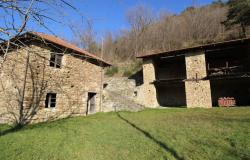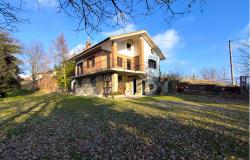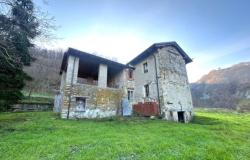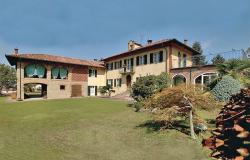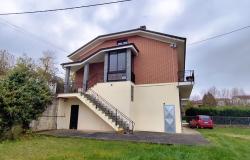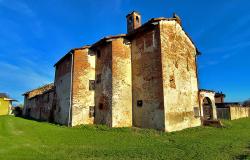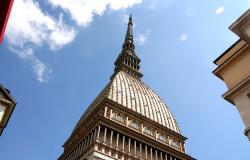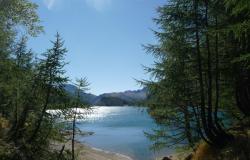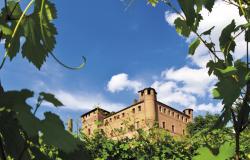Like every masterpiece, Fellini’s La Dolce Vita (“The Sweet Life”) is the ongoing subject of critique, praise, study, and obsession. But unlike most, La Dolce Vita is also an enduring centrepiece in the world’s imagination of Italy at its best and its worst, its most central and its most fleeting.
First released in 1960, La Dolce Vita turns 50 this year – an occasion marked by a special exhibition at the National Museum of Cinema in Turin. “Gli anni della Dolce Vita” features photography from Arturo Zavattini, Fellini’s cameraman, and from Marcello Geppetti, one of the original paparazzi.
Carrying us through the nights of sin and spectacle – and the days of loneliness and desperation which precede and engender them – is La Dolce Vita’s would-be hero, Marcello Rubini (Marcello Mastroianni), a gossip columnist who chases stories and starlets through the piazzas and the parties of post-war Rome. Accompanied by Paparazzo, his insatiable photographer, Marcello revels in the hedonism of Rome’s Via Veneto and its menagerie of multi-lingual playboys and socialites. “Rome is a kind of jungle,” he tells us.
Torn between a stifling domesticity and an unfulfilling life of sin, Marcello has pretensions of abandoning his gossip column and becoming a ‘serious writer’ but lacks the courage to leave his self-made and self-indulgent purgatory. He is a man without a centre, easily distracted, continuously seeking beauty and truth in the spectacle, and forever leaving empty-handed.
In one of the film’s most famous scenes, Marcello follows an American Diva, Sylvia (Anita Ekberg) as she wades into the Trevi Fountain, enveloped in her beauty and the spectacular romance of Rome at dusk. As she bathes in the fountain, a reckless Aphrodite incarnate, he looks on but cannot bring himself to touch.
As one of Fellini’s best-known and most-loved films, La Dolce Vita propels viewers through an episodic maze and cinematic catalogue of what the director called “the confusions, contradictions, and deceptions” of post-war Italian society. It’s a film about the ambiguous morality of the Roman elite that stops short of moralizing. Neither portrait nor symbol, neither entirely obvious nor entirely enigmatic, La Dolce Vita marks the line between Fellini’s earlier neo-realist work and his later “art films.”
By abandoning the trappings of a plot-driven production, Fellini is able to focus almost exclusively on the image, delivering his viewers a string of episodes that take us deeper and deeper into the boredom and loneliness that can accompany wealth and refinement – a reckless apathy punctuated with drama and disgrace.
At points the ambitious camerawork distracts from the fertile indecision of the film. Some critics have argued that La Dolce Vita is all breadth without depth, fancy filming accompanied by shallow philosophy.
I’d prefer to see the film through Fellini’s own eyes. In 1961 he commented: “I don’t have any certainty or clarity myself; it would be dishonest to give it to the characters of my movies. It is more honest to leave in the viewer a torment that can engender meditation, instead of offering a euphoric solution at any price.”
 The exhibition at the National Museum of Cinema helps to re-capture this uncertainty through the eyes of those who lived and worked in the age of La Dolce Vita. The photographs of Geppetti document the original heyday of the celebrities and spectacles of post-war Rome. At the same time, Zavattini’s photographs come from behind-the-scenes at the filming of La Dolce Vita, capturing an unsuspected spontaneity behind a work often praised for its seamlessness.
The exhibition at the National Museum of Cinema helps to re-capture this uncertainty through the eyes of those who lived and worked in the age of La Dolce Vita. The photographs of Geppetti document the original heyday of the celebrities and spectacles of post-war Rome. At the same time, Zavattini’s photographs come from behind-the-scenes at the filming of La Dolce Vita, capturing an unsuspected spontaneity behind a work often praised for its seamlessness.
Tickets to the National Museum of Cinema are priced at 7 euros, with reductions for students, pensioners, children and groups. A 9 euro ticket buys both entrance to the museum and a trip up the “ascensore panoramico,” a panoramic lift hauling visitors up to the top of the Mole Antonelliana and up to the vista of Turin made famous by post-cards and travel guides.

